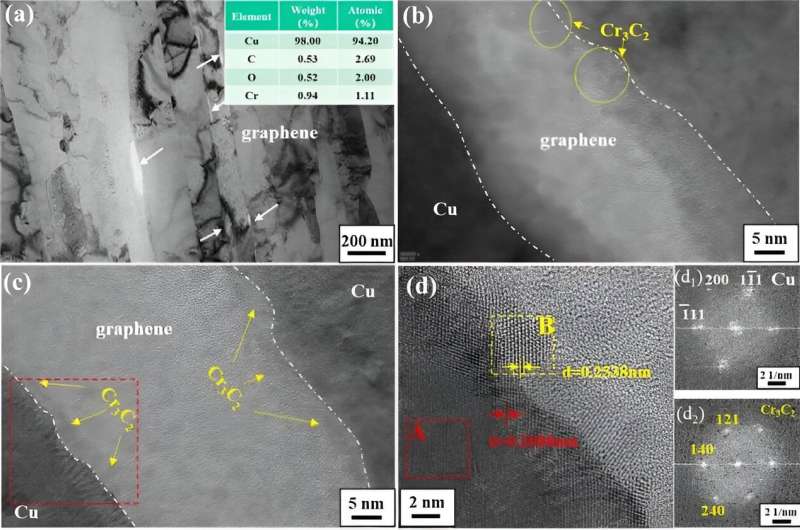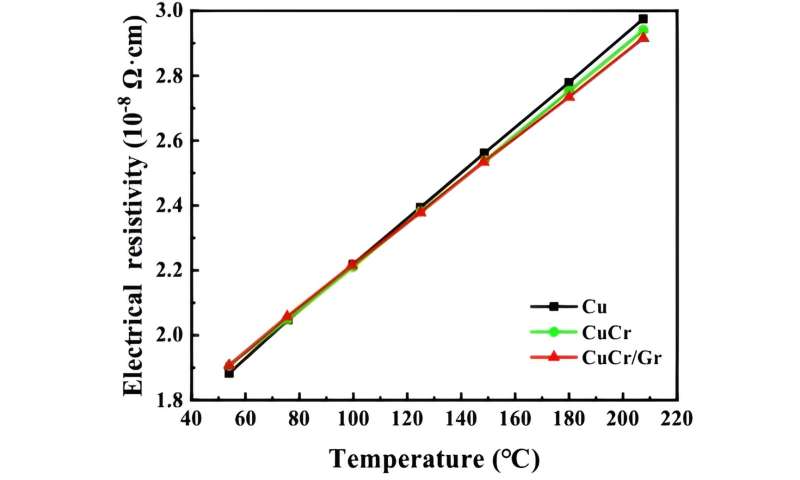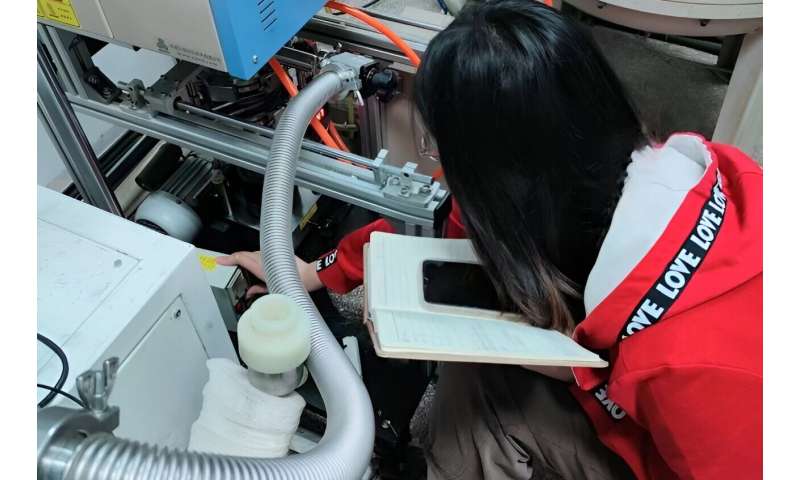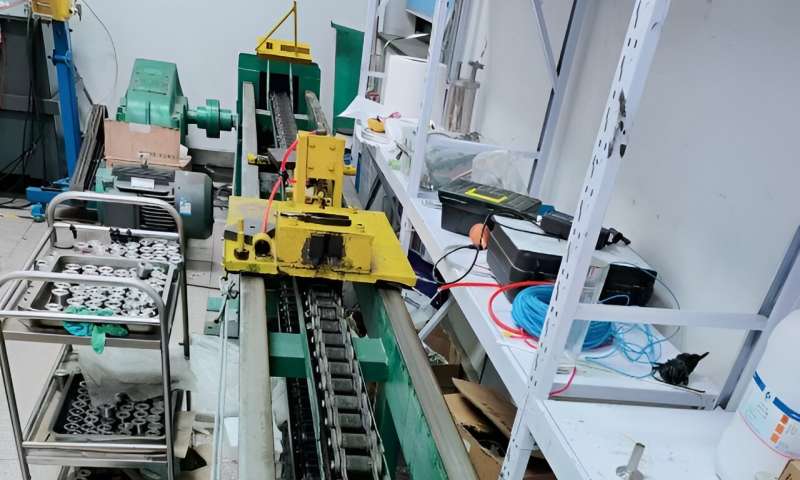This article has been reviewed according to Science X's editorial process and policies. Editors have highlighted the following attributes while ensuring the content's credibility:
fact-checked
proofread
Study explores high-performance copper/graphene composite conductor for motors

A study, led by Tingting Zuo, was based on the idea of in-situ growth, and a series of Cu/Gr composites with improved interfaces were prepared by vacuum hot press sintering. Combined with cold-drawing and heat-treatment processes, composite wires with extremely high strength and electrical conductivity at both room and elevated temperatures were obtained.
The findings are published in the journal CES Transactions on Electrical Machines and Systems.
The temperature coefficient of resistance (TCR) of the wires was drastically reduced to 0.0035/°C, which makes the wires exhibit low resistivity at higher temperatures.
Addressing the challenges of realizing energy efficient electric vehicle motors
Due to inherent characteristics, the conductivity of copper has only increased by 3% over the past 100 years. Copper wires are difficult to maintain high strength at high temperatures, and the conductivity has decreased significantly. Therefore, developing new high-performance copper wires is an important way to improve the performance of electric motors and achieve high energy efficiency in electric vehicles.
Tingting Zuo said, "The in-situ growth method can avoid the agglomeration of carbon nanomaterials, and the formation of rare-earth oxides or carbides at the interface can effectively improve the interfacial bonding. Effective combination of the above methods and feasible plastic processing can result in high-quality copper/graphene composite wires.
-

The resistivity versus temperature curves of pure Cu, CuCr alloys and CuCr/Gr wires were tested to determine the effect of Cr and graphene incorporation on resistivity. Credit: CES Transactions on Electrical Machines and Systems (2024). DOI: 10.30941/CESTEMS.2024.00009 -

Jiaxiao Wang, a joint student at Shanghai Electric Power University and the Institute of Electrical Engineering of the Chinese Academy of Sciences, utilizes vacuum hot pressing to fabricate samples. Credit: CES Transactions on Electrical Machines and Systems -

Using the drawing machine, the sample can be processed from the sintered state to the wire, the deformation of a single pass is about 10%, and the drawing rate is about 2m/min. Credit: CES Transactions on Electrical Machines and Systems
The study shows good application advantages at temperatures higher than 100°C and opens a new way for the preparation of Cu/graphene high temperature composites. It provides a suitable method for the mass production of high-performance Cu/graphene composite conductors for high power density motor winding wires.
Looking ahead, the research team from Shanghai University of Electric Power and the Institute of Electrical Engineering of the Chinese Academy of Sciences plans to further improve the copper-carbon bonding interface, allowing the carbon nanomaterials to fully utilize their current transfer and reinforcement effects on the substrate, in order to achieve composite wires with extremely high strength and conductivity at both room and high temperatures.
"Our next goal is to optimize our process parameters and rationalize the design of our experiments while addressing the aggregation and interfacial bonding of graphene in copper," Zuo explained.
This in-situ growth technique helps to realize the use of copper/graphene wires in motor windings. As researchers continue to refine this technology, they hope to develop high-strength, high-conductivity, and high-temperature composites that will enable the mass production of high-power-density motors.
More information: Jiaxiao Wang et al, Investigation on the Novel High-performance Copper/Graphene Composite Conductor for High Power Density Motor, CES Transactions on Electrical Machines and Systems (2024). DOI: 10.30941/CESTEMS.2024.00009
Provided by CES Transactions on Electrical Machines and Systems




















